Healthy Players
Transforming Xavier University Women's Soccer (XUWS) with Beyond Pulse and Data Analyst on Demand
A Beyond Pulse Case Study
XUWS boosts fitness and performance with Beyond Pulse Integration.



Zero Major Injuries
Effective training and recovery enhance team well-being and morale.
Increased Fitness Levels
Data-driven strategy drives continuous fitness & strength gains.
Coaching Staff of the Year
Championship wins & honors through optimized coaching.

Name:
Xavier University Women's Soccer
Players:
25
Location:
Cincinnati, Ohio
About Xavier University Women's Soccer
Xavier University's Women's Soccer program, a proud contender in the Division I Big East Conference, is coached by Nate Lie, Katy Etelman, Tyler Smaha, and Jacob Morrison. The team celebrated a significant achievement this year by winning a share of the BIG EAST Regular Season title and securing the No. 4 seed in the NCAA tournament. The groundwork for this season was laid in the spring of 2023, marking the start of a crucial preparation phase.
During this period, the team embraced Beyond Pulse to prevent mid-season drop-offs in player performance, a common issue in collegiate sports, which was commonly attributed to things like reduced playing time, travel, and workload challenges. In 2023, keeping players fit, healthy, and engaged throughout the season was a priority for the XUWS program. In parallel, the coaching staff focused on fostering player acceptance and engagement with this new technology-driven approach.
Beyond Pulse proved invaluable, providing comprehensive post-training reports and actionable insights in an easily understandable format through the whole of 2023. Complementing this, XUWS was among the first programs in the nation to utilize Data Analyst on Demand (DAoD), a Beyond Pulse service offering deeper data analysis catering to the program's specific needs.
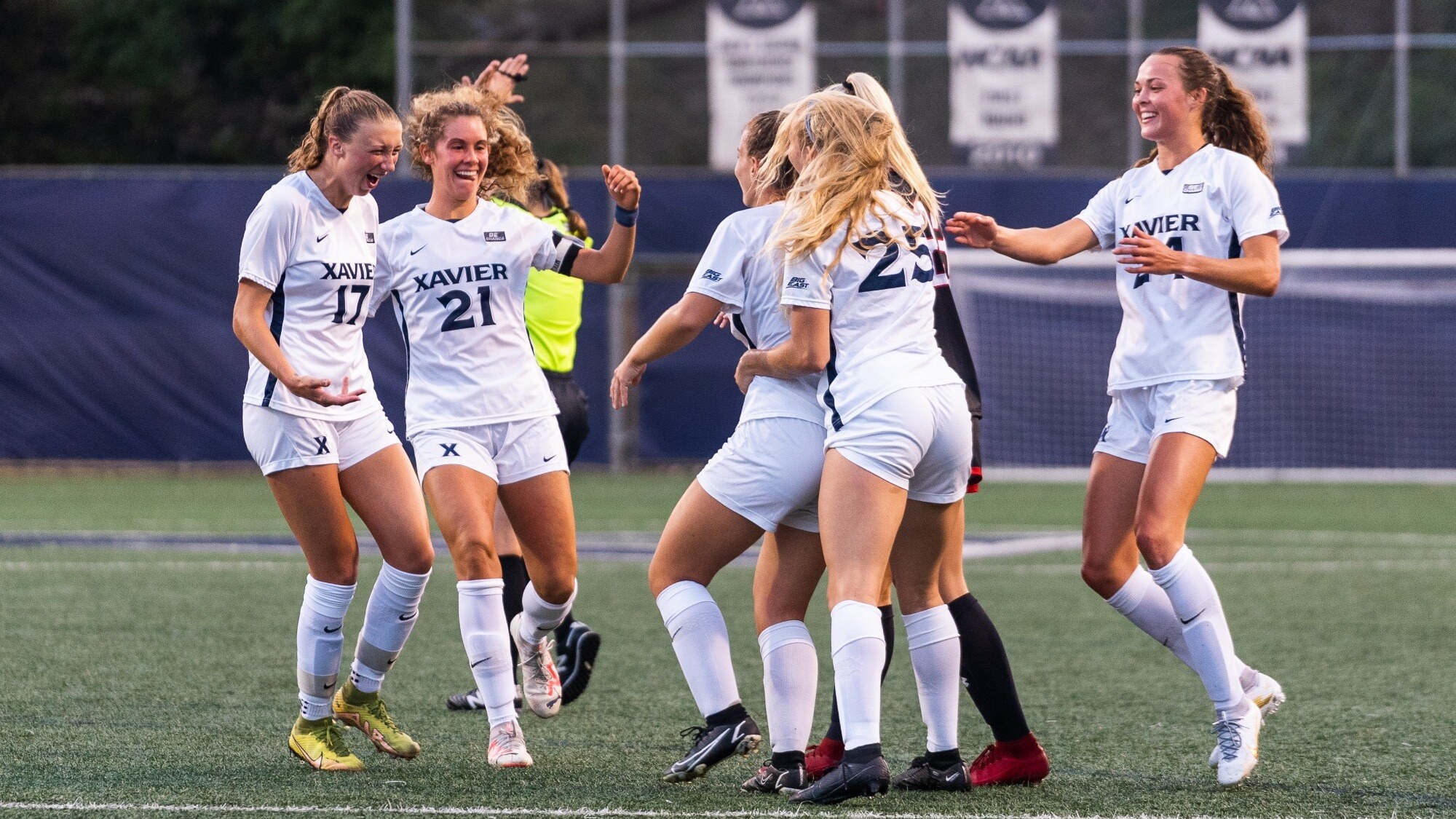
Challenge 1: Immediate and Simple Player Tracking
Before Beyond Pulse, obtaining immediate, actionable feedback on player performance was a challenge for XUWS. The staff had used GPS tracking in previous years - one year, only using it in games, and the following year, using it in both games and training. At the start of 2023, XUWS used Beyond Pulse in training and games to more closely monitor workload and maintain player fitness.
One of the key features of Beyond Pulse is its instant Session Summary Emails, which can go to both coaches and players immediately after a session ends. Katy Etelman commented on the impact of the Session Summary Reports, saying, "One of the main reasons we switched to Beyond Pulse was its capability to provide immediate reports post-training."
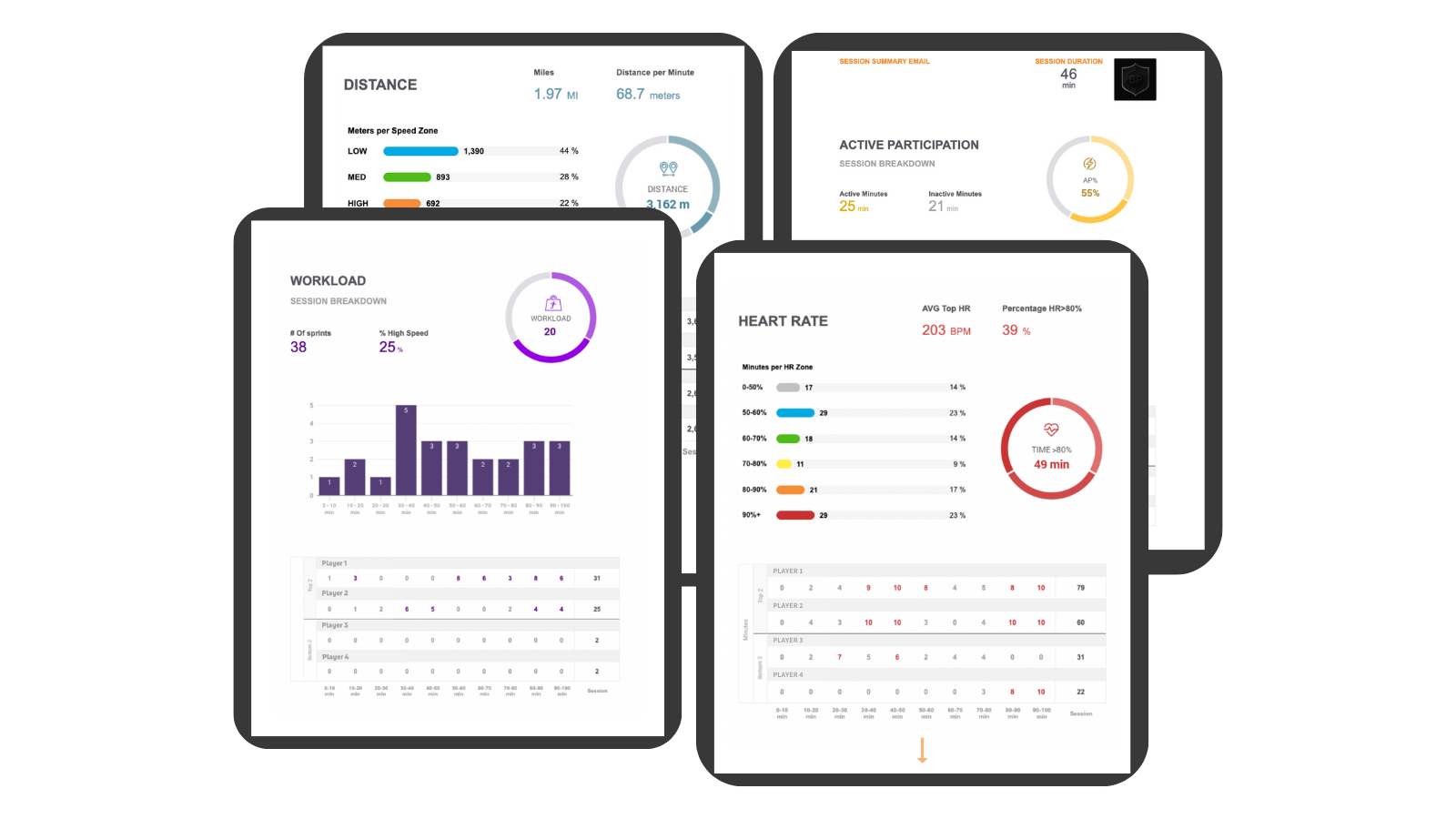
Figure 1: Four sections of the Beyond Pulse Session Summary Email.
While the Beyond Pulse Dashboard App is the coach’s go-to for an extensive, deeper data analysis, the Session Summary Emails offer a quick, informed review of session data. There are four sections that the Session Summaries are broken down into:
- Heart Rate
- Active Participation (AP)
- Distance
- Workload
At a glance, coaches and players can review player metrics, and averages, and even look at how the metrics played out across 10-minute blocks, offering a structured framework to trace and reflect upon the session’s progression from start to finish.

Katy Etelman | Assistant Coach, Xavier University Women's Soccer
“This feature put essential information right at our fingertips - as well as the players, which allowed them to understand their performance in each session.
It really enabled players and coaches to track progress session by session, comparing individual performances with the team's average. This level of insight has been a game-changer for us."
Challenge 2: Enhancing High-Speed Performance with DAoD Insights
The Data Analyst On-Demand Reporting added an extra layer of sophistication to the program. “It gave a different perspective from a data viewpoint,” added Katy Etelman.
One critical area of focus identified through DAoD was top-speed maintenance. The data revealed continuous training weeks where players weren't consistently reaching their maximum speed potential, defined as approximately 95-100% of their top capability. After observing a trend over several weeks where players weren't hitting these speeds, DAoD recommended more high-intensity speed training.
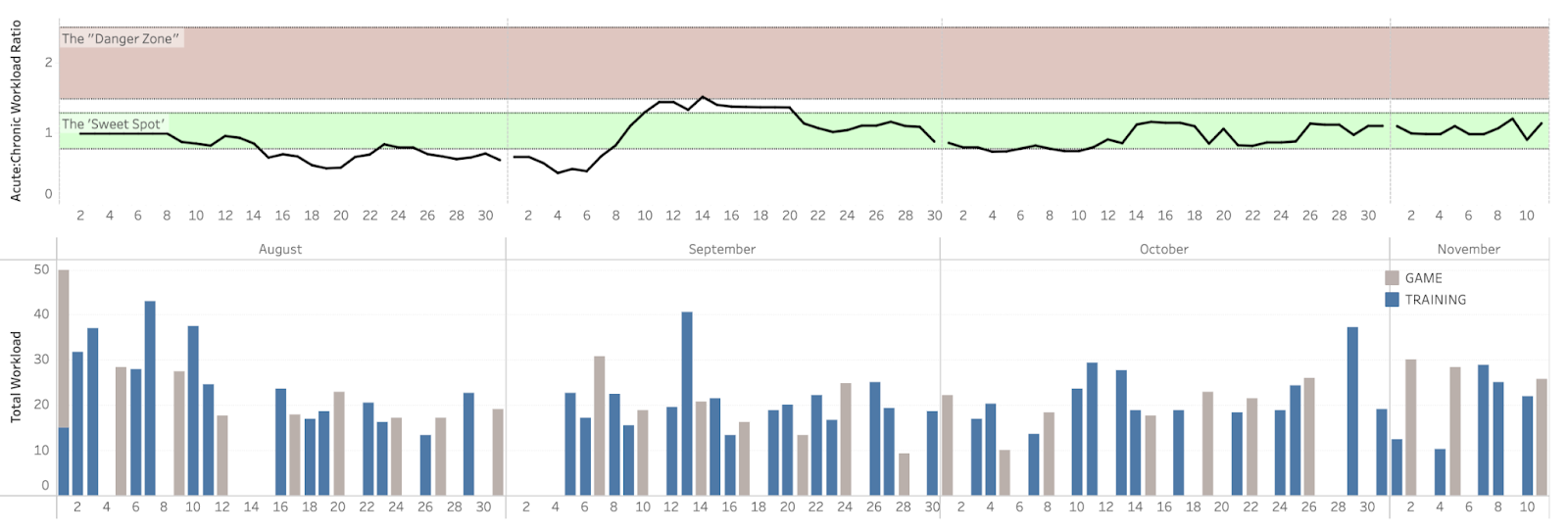
Figure 2: This graphic displays the intervention strategy deployed by our DAoD team. For a particular player we plot their top speed reached each week throughout training and or games. In an optimal week players should reach at least 95% of their maximum speed. With the knowledge that weekly training can vary with travel/preparation of a busy university schedule, top speed was monitored and intervention was recommended when individuals dipped below 90% of their maximum speed on any given week. This graphic shows two areas of intervention for a player - the first occurring on the week of 8-28 and the second on 10-2. Immediately after intervention, we see Xavier staff was able to extract more from this player through on-field work.
"We initially tried integrating high-speed drills towards the end of our sessions," Katy shared, "but soon found it more effective to tackle them right after warm-ups."
The high-speed training endorsed by DAoD was not only effective but also efficiently structured. Katy implemented drills that emphasized short, intense bursts of activity rather than prolonged exercises.
An example she provided was a sprint drill consisting of 4-6 repetitions. This included variations like dead start acceleration over 30 yards and rolling starts, where players jog for 10 yards before sprinting for 20 yards. Sometimes sprints were also performed from a jogging start, where players jog for 10 yards before sprinting for 20 yards.
These exercises were designed for short, intense bursts of speed, with substantial rest periods of 3-4 minutes between each sprint. The total active running time was kept to around 90 seconds, with the rest period cumulatively extending to about 20 minutes, ensuring athletes could consistently achieve and maintain their top speeds. This strategy underscored the importance of speed in creating more play opportunities for athletes, aligning with the team's broader athletic goals.
Interested in working with Data Analyst On-Demand?
Challenge 3: Fostering Player Buy-In and a Positive Fitness Mindset
Adopting new technology in sports often hinges on player buy-in. For Xavier University Women's Soccer (XUWS), the key was using Beyond Pulse not as a means of surveillance but as a tool for player development and fostering open coach-player communication.
Katy Etelman reflected on this approach, saying, “Since integrating Beyond Pulse last spring, we've explored new fitness approaches and strengthened our commitment to the weight room. We never treated fitness tests as pass or fail. The emphasis, this year, was on players coming in fit because they wanted to, not because they had to.”
This player-centric approach paid dividends in terms of engagement. A unique feature of Beyond Pulse is the Individual Player Session Summary emails. Katy observed that the Player Session Summary emails, focused on the individual player feedback, encouraged self-reflection and personal accountability in training for each player.

“Beyond Pulse emails individual reports and provides a personal dashboard in the app, making the feedback more intimate and directly accessible to each player,” Katy explained.
She felt this contributed to their fitness-positive culture, effectively removing any stigma or shame that might arise from direct coaching interventions. It empowered players with a sense of ownership over their fitness journey.
Katy emphasized the physical aspect of the game and how Beyond Pulse supported this focus: “Physical fitness is a defining factor for us, and Beyond Pulse enhances this aspect.” At XUWS, coaches participate in running and lifting sessions alongside players, further demonstrating the collective commitment to fitness.
“Player activity tracking, for us, isn’t about surveillance. It’s about fostering a culture where fitness is about collective improvement, not punishment. Beyond Pulse tracking supports this ethos by providing a healthy, and accessible tool for individual players.”
Challenge 4: Optimizing Training with Acute:Chronic Workload Analysis
The concept of acute:chronic workload ratio is pivotal in sports training at any level, as it helps in balancing training load to optimize performance and minimize injury risk. Acute workload refers to an athlete's training load in a short period (like a week), while chronic workload represents the longer-term average load. A balanced ratio ensures that players are neither undertrained nor overtrained.
At Xavier University Women's Soccer (XUWS), this concept was put into practice with the help of Data Analyst on Demand (DAoD). The Xaiver coaches utilized DAoD to track and visualize this workload ratio throughout the 2023 spring and fall seasons. They created comprehensive visuals, including graphs and numerical data, to illustrate the team’s workload dynamics.
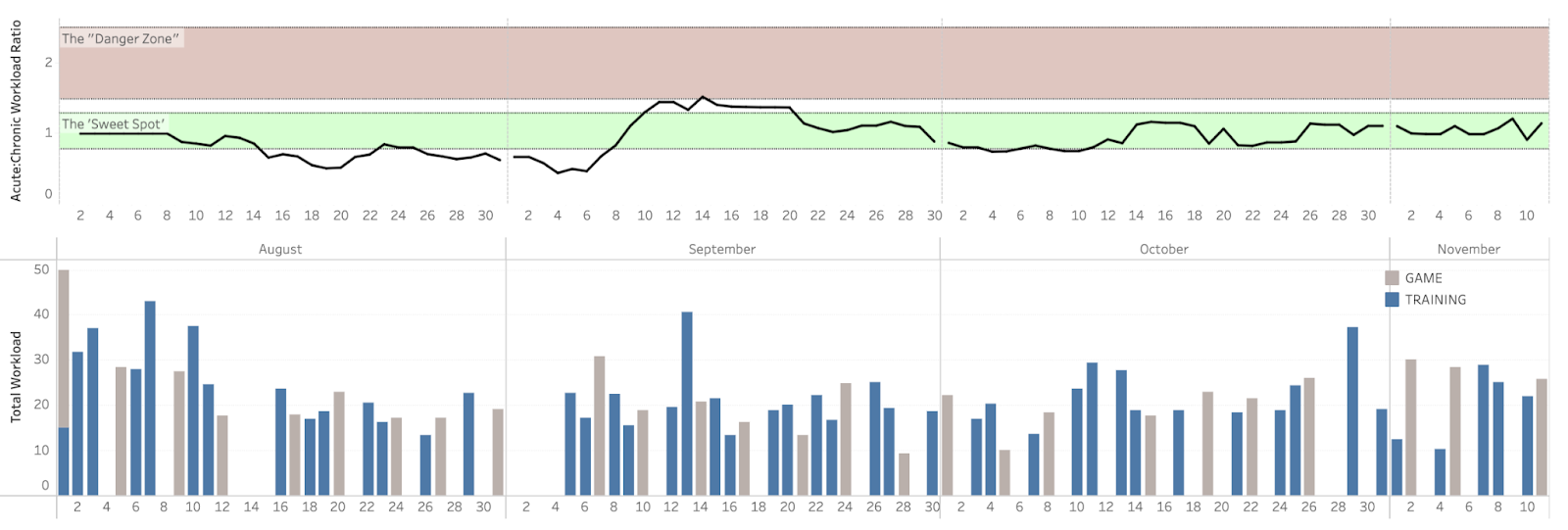
Figure 3: This graphic shows a DAoD graph tracking a player's Acute:Chronic workload ratio. The goal is to maintain the line within the “Sweet Spot” for optimal range. In this case, the player experiences underloading in late August, indicated by a dip below the green zone, followed by an overcorrection leading to a brief entry into the high-risk red zone. While the red zone signals a higher injury risk, it's not a certainty of harm but rather an indicator to discuss the athlete's wellbeing, sleep quality and stress levels. Staying in the red zone for too long increases injury risk.
“This detailed analysis allowed us to compare across position groups,” Katy explained. “Having the entire season’s data — individual players, practices, and games — visually laid out was incredibly useful for strategic planning.
For example, they would analyze specific data for forwards, looking at parameters like sprint count, heart rate, and distance covered. “During the season, we would ask our forwards to be able to transition and expose teams in the space behind. Monitoring sprint numbers was important in this context,” said Katy.

Figure 4: This graphic compares strikers in all season games, showing total sprints (top) and sprints per minute (bottom). Total sprints tend to favor players with more game time, like Player 1, who has a high sprint count. However, the sprints per minute metric reveals that other players sprint more frequently during their time on the field, despite Player 1's overall higher sprint total.

Figure 5: The image displays two side-by-side games, using the same plots for comparison. On the right, against St. John's, Player 1 leads in both total sprints and sprints per minute. On the left, in the game against UConn, Player 2 shows fewer total sprints but nearly matches Player 1 in sprints per minute.
For XUWS, a high-impact game would typically see a forward reaching about 35 sprints, whereas in games with lesser impact, the sprint count might drop to around 20. This approach of using sprint data provided a clear, measurable way to gauge player performance and adapt strategies accordingly.
This level of detail was crucial for XUWS’s strategy. “Our game plan involves a lot of pressing, so sprint numbers are critical for us. DAoD helped us understand how effective our forwards were in games based on their sprint counts,” Katy shared.
This approach allowed the team to tailor their training and recovery strategies based on solid data, ensuring that players were adequately prepared for the demands of each game without overexertion. It exemplified how data-driven insights could be seamlessly integrated into a sports program to enhance both player performance and team strategy.
Interested in working with Data Analyst On-Demand?
Challenge 5: Avoiding Mid-Season Drop-Offs with DAoD Insights
A critical aspect of XUWS’ strategy was to prevent the common issue of mid-season or end of season performance drop-offs. Utilizing Data Analyst on Demand (DAoD), the team could effectively maintain and even increase training intensity throughout the season.
The insights from DAoD played a pivotal role in helping the team stay focused and committed to their training regimen. This approach was instrumental in avoiding the typical plateau or decline in performance that teams often experience midway through the season. By continuously monitoring and analyzing player data, DAoD enabled the coaching staff to make informed decisions about when and how to increase training intensity.
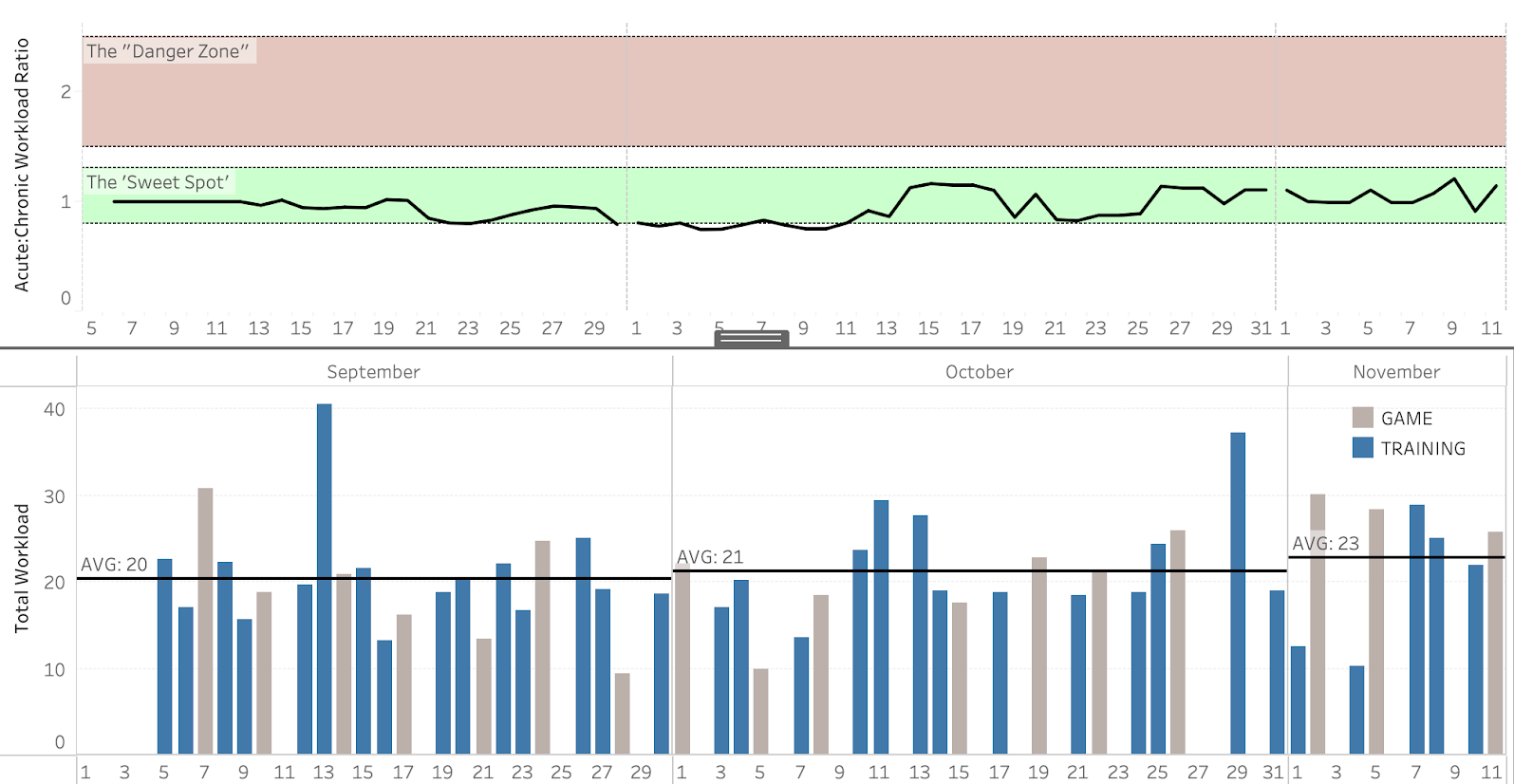
Figure 6: This example illustrates how Player 1 successfully maintained her Acute:Chronic Ratio within the optimal zone, while progressively increasing her average daily workload each month.
This data-driven strategy ensured that the team did not fall into the trap of merely 'holding on' as the season progressed. Instead, they were able to proactively 'keep pushing,' enhancing their performance levels and maintaining peak physical condition even in the later stages of the season, as proven in their record. This approach was key in keeping the team competitive and in top form throughout the entire season.
XUWS 2023 Results



Zero Major Injuries
Effective training and recovery enhance team well-being and morale.
Increased Fitness Levels
Data-driven strategy drives continuous fitness & strength gains.
Coaching Staff of the Year
Championship wins & honors through optimized coaching.
The team credited their success in maintaining fitness and strength, as well as avoiding major injuries throughout the year, to the implementation of Beyond Pulse. Their goal to enhance player fitness levels and minimize mid-season performance drop-offs was effectively achieved.
Beyond Pulse, along with the Data Analyst on Demand (DAoD) service, were invaluable tools for the players and staff at XUWS. They provided essential data that guided coaching strategies and fostered a heightened sense of self-awareness among the players, contributing significantly to the team's overall health and performance.
Check out XUWS 2023 season highlights:
SEASON OVERALL
- The 4-seed is Xavier's best seeding in program history and marks the second time Xavier has earned the right to host, also hosting in 2021. The Musketeers were also included in the NCAA Soccer Committee's Top 16 midseason ranking, coming in at No. 13 based on matches through Oct. 17.
- Xavier won a share of the BIG EAST Regular Season title and the No. 1 seed to the tournament,
- The Musketeers advanced to the BIG EAST Tournament title match, finishing runners-up. Xavier earned a bye to the semifinals and advanced to the Championship with a win over Providence before falling to No. 2 seed Georgetown in the final.
- Prior to the NCAA tournament draw, Xavier was recognized as Co-Big East Champs along with having 6 All-Conference members and awarded Coaching Staff of the Year!
- Sophomore Natalie Bain was a 1st team defender in the Big East
- Four players were selected to the 2nd team including junior Ella Rogers, senior Maddie Reed, sophomore Maria Galley and junior Samantha Weihe. Their 6th and final All-Conference member was senior Sonia Vargas who made 3rd team.
FINAL GAME
Xavier fell to Tennessee 1-0 in double overtime in the First Round of the NCAA Tournament
Finished the game with a 41-11 on shots, the second most shots in a single match in program history.
Regan Dancer had a career-high seven shots. Ella Rogers set a new career-best with six and Emma Flick matched her career-high with six shots.
Interested in working with Beyond Pulse Player Activity Trackers?
Looking Ahead
Xavier University Women's Soccer plans to continue and expand its use of Beyond Pulse and DAoD in the Spring 2024 season. The goal is to refine their training strategies further and prepare for another successful fall season.
Keep your players fit and healthy this season.
Beyond Pulse offers simplified tools to help coaches make the most of their player activity data.
%20(9).png?width=200&height=113&name=BEYOND%20PULSE_RGB%20(2)%20(9).png)